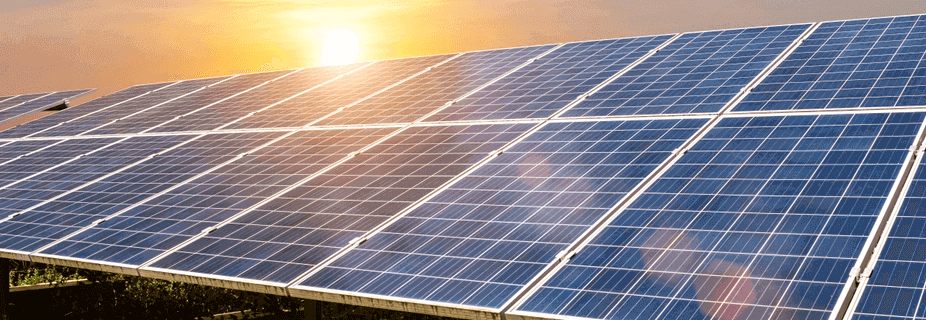KEY POINTS
- 3kW solar systems were once the most popular solar system in the home.
- A 3kW solar system would likely require between seven to 12 solar panels.
- A quote for the final cost of a 3kW solar system can usually be provided by your installer for free.
According to SolarQuotes, the 3kW solar system was once the most popular solar system in the home. But due to solar panels becoming more affordable in recent years, larger households are opting for 6.6kW solar systems and above.
If you reside in a small household, the 3kW solar system may be a better option for your solar needs. This Canstar Blue guide will answer everything you need to know about 3kW solar systems in Australia so that you can make an informed decision about whether or not this is a suitable option for you.
On this page:
Advertisement
How many panels are in a 3kW solar system?
Depending on the size of the solar panels used within the system, a 3kW solar system will have between seven and 12 panels. The exact number will also depend on the amount of sunlight your home receives.
Older systems generally use 250W solar panels, but modern solar panels can be 415W or more. This would mean that a 3kW solar system would likely require between seven to 12 panels.
Solar systems using 250W solar panels require approximately 20 sqm of roof space (for 12 panels of 1.6m x 1m), though 415W panels use up less roof space with only seven panels.
You’ll generally notice that most households with a 3kW solar system have the solar panels on one section of the roof, usually in the direction of where the best sunlight is. There may be other circumstances where a 3kW solar system may need more than the average number of panels, but this should be explained by your solar installer.
How much kWh does a 3kW solar system produce?
A 3kW solar system will produce between 10 and 12 kilowatt hours (kWh) of electricity per day on average. This means that over a year, you can expect your system to offset between 3,650 and 4,380kWh of electricity from the grid, or roughly two-thirds of what the average Australian residential property uses.
How much electricity a system of this size will generate depends on several key factors, including:
- Location: including local weather and how much sunlight your panels will be exposed to
- Panel efficiency: the age and type of solar panels – monocrystalline, polycrystalline or thin film
- Roof positioning: the direction and positioning of the panels on your roof in relation to the sun
- Obstructions: much like the positioning, any trees or branches that obstruct direct sunlight
How much does a 3kW solar system cost?
The price of an installed 3kW solar system costs between $3,500 and $5,000, depending on where you live and any available rebates. Although installation costs vary, there are small-scale technology certificates (STCs) nationwide, in which this scheme applies rebates to rooftop solar systems under 100kW.
Other price considerations include:
- What your chosen solar installer is charging in your location
- The brand of solar panels
- Whether you want to purchase the following components:
A quote for the final cost of a 3kW solar system can usually be provided by your installer for free.
Compare solar plans and prices
Here are some of the cheapest solar-specific deals from the retailers on our database. These costs are based on the Ausgrid network in Sydney but prices will vary depending on your circumstances. We show one product per retailer, listed in order of lowest price first. Annual price estimates assume general energy usage of 3900kWh/year for a residential customer on a single rate tariff. Price estimates exclude solar feed-in tariff credits. These are products from referral partners†. Our database may not cover all deals in your area, and please check retailer websites for up to date information.
Here are some of the cheapest solar-specific deals from the retailers on our database. These costs are based on the Citipower network in Melbourne but prices will vary depending on your circumstances. We show one product per retailer, listed in order of lowest price first. Annual price estimates assume general energy usage of 4000kWh/year for a residential customer on a single rate tariff. Price estimates exclude solar feed-in tariff credits. These are products from referral partners†. Our database may not cover all deals in your area, and please check retailer websites for up to date information.
Here are some of the cheapest solar-specific deals from the retailers on our database. These costs are based on the Energex network in Brisbane but prices will vary depending on your circumstances. We show one product per retailer, listed in order of lowest price first. Annual price estimates assume general energy usage of 4600kWh/year for a residential customer on a single rate tariff. Price estimates exclude solar feed-in tariff credits. These are products from referral partners†. Our database may not cover all deals in your area, and please check retailer websites for up to date information.
Here are some of the cheapest solar-specific deals from the retailers on our database. These costs are based on SA Power network in Adelaide but prices will vary depending on your circumstances. We show one product per retailer, listed in order of lowest price first. Annual price estimates assume general energy usage of 4000kWh/year for a residential customer on a single rate tariff. Price estimates exclude solar feed-in tariff credits. These are products from referral partners†. Our database may not cover all deals in your area, and please check retailer websites for up to date information.
You may also be interested in:
How much money will a 3kW solar system save me?
To work out how much a 3kW solar system will save you, a few key components must be assumed. The energy usage of every household is different, so no two solar systems of the same size will yield the same savings over a quarterly billing cycle or year.
The following is an example of yearly savings to expect with a 3kW solar system for households offsetting grid electricity being imported to your home. Please treat the figures below as a general guide only.
For example, say you live in Sydney and you pay 28 cents per kWh (c/kWh) for your electricity usage. Then, we assume you use 16kWh of energy each day. Assuming your 3kW solar system covers 12kWh of your daily energy usage, you’re left with using 4kWh of electricity drawn from the grid. Of the $4.48 you’d be charged for daily power use without solar power from the grid, you’d only pay $1.12 for electricity each day. This means that the remaining $3.36 would be offset by your solar panels, which, over a year, amounts to savings of more than $1,200.
Keep in mind the above scenario only factors in usage charges, not electricity supply charges or other fees on your electricity bill.
How long before a 3kW solar system pays for itself?
Numerous factors will contribute to the payback period of solar panels. SolarQuotes suggest that a 3kW solar system will take three years to pay for itself, assuming you pay 30c/kWh for imported electricity. Households that export more energy will prolong their solar system payback time.
Again, other factors will determine the buyback period, such as:
- The initial installation cost (minus any rebates)
- The angle and direction of your solar panels facing the sun
- The weather in your area
- How old and efficient your system is — we recommend installing a solar monitoring system to monitor the health of your system.
- How well maintained and clean your solar system is over its lifespan
- The value of the feed-in tariff you’re on
Taking all these considerations into account, a 3kW solar system has the potential to save you a lot of money on your energy bills over an extended period of time.
Should you get a 3kW solar system?
The pros of buying a 3kW solar system will ultimately come down to your personal situation. The good news is that the upfront cost of solar is on a downward spiral so investing now may pay off in the long run. While 3kW solar systems are not the biggest option on the market, they are size-appropriate for small households that are energy conscious.
In addition to the ongoing financial and environmental benefits, adding a solar system also increases the value of your property.
Compare Solar Energy Providers
Original reporting by Tara Donnelly
Image source: Portstocker/Shutterstock




Share this article